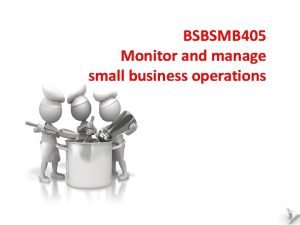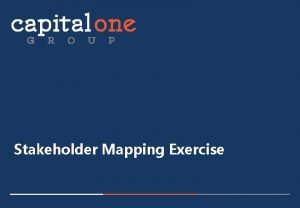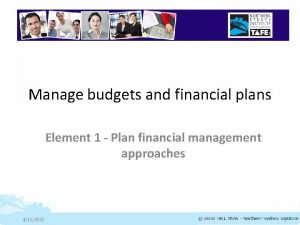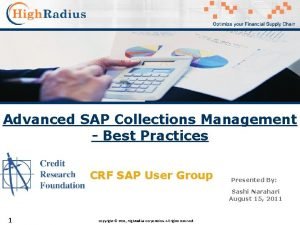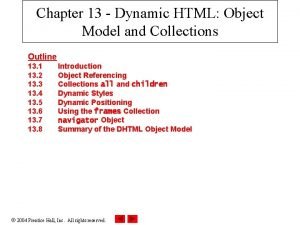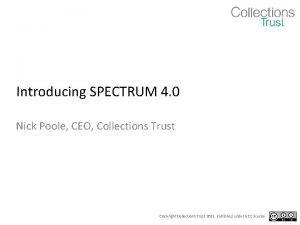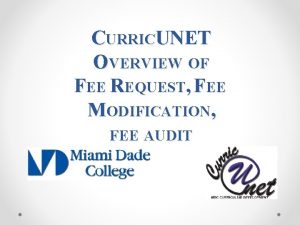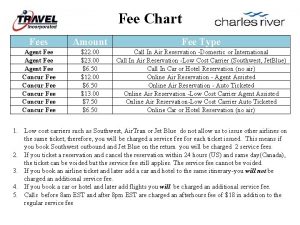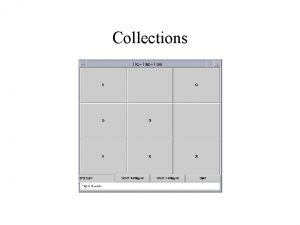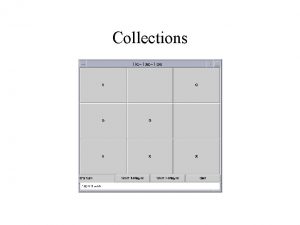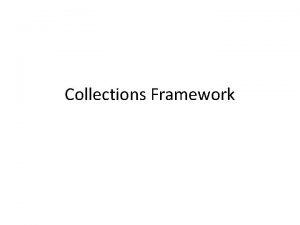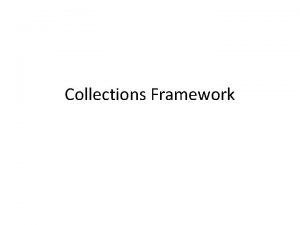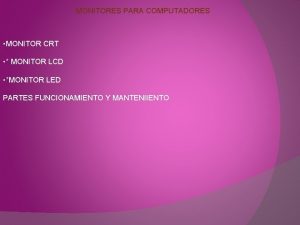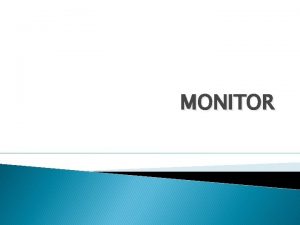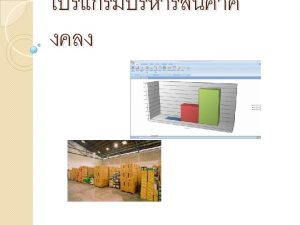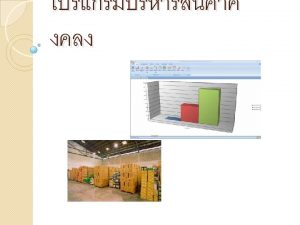Monitor and Manage Client Fee Collections Financial Management


























- Slides: 26

Monitor and Manage Client Fee Collections Financial Management Change Package Best Practice 2

Financial Management Change Package Best Practice Recommendations 1. Bill the correct payer and optimal amount 2. Monitor and manage client fee collections 3. Monitor and manage payments from third-party payers (TPPs) Link: https: //www. fpntc. org/resources/financial-management-changepackage 2

Financial Management Change Package: Best Practice 2 Monitor and manage client fee collections 3

Meeting Objectives By the end of today, you should be able to: • Describe the importance of monitoring and managing client fee collections • Describe the challenges related to monitoring and managing client fee collections • Describe at least one strategy to monitoring and managing client fee collections • Describe at least one tool available to manage client fees 4

Rationale for Monitoring and Managing Client Fee Collections • Collecting client fees is an important component of managing financial health § Uninsured clients § TPP client fees 5

Suggested Performance Indicators to Monitor and Manage Client Fee Collections Sub-indicators related to Net Collection Rate 6

Suggested Performance Indicators to Monitor and Manage Client Fee Collections (cont. ) 7

Example of Fee Collections Impact Charges (adjusted) for uninsured/self-pay client services for a month - $4400 Scenario 1: 50 % collection rate—$2200 Scenario 2: 95% collection rate—$4180 A difference of $1, 980, or $23, 760 annually 8

Discussion of Challenges What are your agency’s challenges related to monitoring and managing client fee collections? 9

Discussion of Challenges (cont. ) • Changing the culture of the agency • Changing clients’ expectations regarding payment • Balancing customer service and payments expected • Training • Unclear policies and procedures 10

Overview of Strategies for Best Practice 2 • Establish and/or update and implement policies on client payment and collection processes • Manage discounted fee collections at time of visit for uninsured/self-pay clients • Accurately discount and bill for TPP client fees – Copays, deductibles, and coinsurances 11

Strategies for Developing Clear Policies and Procedures • Think about frequency or approach to reviewing and/or developing polices and procedures • Items to address in agency’s policies and procedures: • • • Scheduling, check in and exit communications Methods of payment Time-of-visit payment expectations Billing/collecting for TPP client fees Credit balances 12

Strategies for Developing Clear Policies and Procedures (cont. ) • More items to address: • Past due balances • • Client communication process Monthly Invoices Collection agency (if using) Payment plans • Client acknowledgment of these financial P&P’s • Training and observing team 13

Communicate Policies and Procedures to Clients Clear communication is crucial. When scheduling, at check-in , and at exit, Communicate: • Charges/discounts • Payment expectations • Collection policies • Donations • TPP billing of deductibles and co-pays 14

Words Make a Difference “How will you be paying for your services today? ” versus “How much can you pay for services today? ” 15

Strategies for Managing Fee Collections at Time of Visit For uninsured/self-pay clients: • Collect fees for services provided at time of visit • Best chance of collecting is at time of visit • Accept cash, check, credit and debit cards For all clients: • Monthly invoice process • Identify/communicate balances during the scheduling process 16

Strategies for Billing & Collecting Fees From TPP clients • Bill/collect post-TPP adjudication • Title X regulations regarding the discount to the remaining balance – Calculating appropriate discount – Utilize past due balance tactics previously outlined 17

Copay Example Full charge for service is $125. Your agency has a contractual agreement with ABC insurance to discount the charge to $100 and to charge the client a $25 copay. • Client A is eligible for a 90% discount based on sliding fee discount schedule – How much should client pay? • Client B is eligible for a 50% discount based on sliding fee discount schedule – How much should client pay? 18

Deductible and Copay Example Same scenarios, but Client B has not met the deductible. Full charge for service is $125. Your agency has a contractual agreement with ABC insurance to discount the charge to $100 and to charge the client a $25 copay. • Client B is eligible for a 50% discount based on sliding fee discount schedule – How much should client pay, accounting for the deductible? 19

Fee Collection Tools 20

Fee Collection Tools (cont. ) Title X Client Fee Collections Frequently Asked Questions 21

Case Scenario You begin to monitor TPP client billing of copays and deductibles. While observing billing procedures, you note that amounts are being discounted incorrectly, and that only one invoice is sent out. The resulting A/R of these accounts is that 72% of balances are outstanding past 120 days. What do you do? 22

Success Story Southern Nevada Health District, a Title X grantee with two service sites, wanted to improve its overall fee collection rate of both timeof-visit services and past due balances. They also wanted to improve client income information gathering to calculate discounts and correct fees accurately. Actions taken • Simplified financial intake form; added specific financial questions • Trained staff to identify past due balances for clients when calling for a new appointment • Trained staff to communicate to all clients what payment was due when scheduling an appointment and also at time of visit 23

Success Story (cont. ) Results: • Increased collections per uninsured client from an average of $8. 31 to $25. 35 over a four-month period, resulting in an increase of nearly $8, 000 in monthly fees collected Key points: • Developing a script for front desk staff and observing staff using it was helpful (past due balances, payment due at time of service, payment methods, etc. ) • Measuring and sharing results/improvements each month was motivating • Consistent, persistent client communications during scheduling, checkin, and exit were helpful in changing client expectations 24

What other questions do you have? What other issues would you like to discuss? 25

Thank you! Contact: fpntc@jsi. com 26
 Chapter 20 patient collections and financial management
Chapter 20 patient collections and financial management Small business operations
Small business operations Keep satisfied manage closely monitor keep informed
Keep satisfied manage closely monitor keep informed Stakeholder matrix
Stakeholder matrix Fds
Fds Manage budgets and financial plans
Manage budgets and financial plans Vcloudpoint zero client price
Vcloudpoint zero client price Client lourd vs client léger
Client lourd vs client léger Example of two tier architecture
Example of two tier architecture Crf sap
Crf sap Real estate risk management fee
Real estate risk management fee Fee management system modules
Fee management system modules Money management international
Money management international Pseg credit and collections
Pseg credit and collections The html
The html Collection of specialized cells and cell products
Collection of specialized cells and cell products Aba therapy billing and insurance services
Aba therapy billing and insurance services Williams and fudge pay online
Williams and fudge pay online Tonbridge & malling refuse collection
Tonbridge & malling refuse collection Financial methods of motivation definition
Financial methods of motivation definition Types of syndicated data
Types of syndicated data University of chemistry and technology prague tuition fee
University of chemistry and technology prague tuition fee Fee for service vs capitation pros and cons
Fee for service vs capitation pros and cons Using system using system.collections.generic
Using system using system.collections.generic Java collections tree
Java collections tree Collections trust spectrum
Collections trust spectrum Certificate iii in pathology collections
Certificate iii in pathology collections

